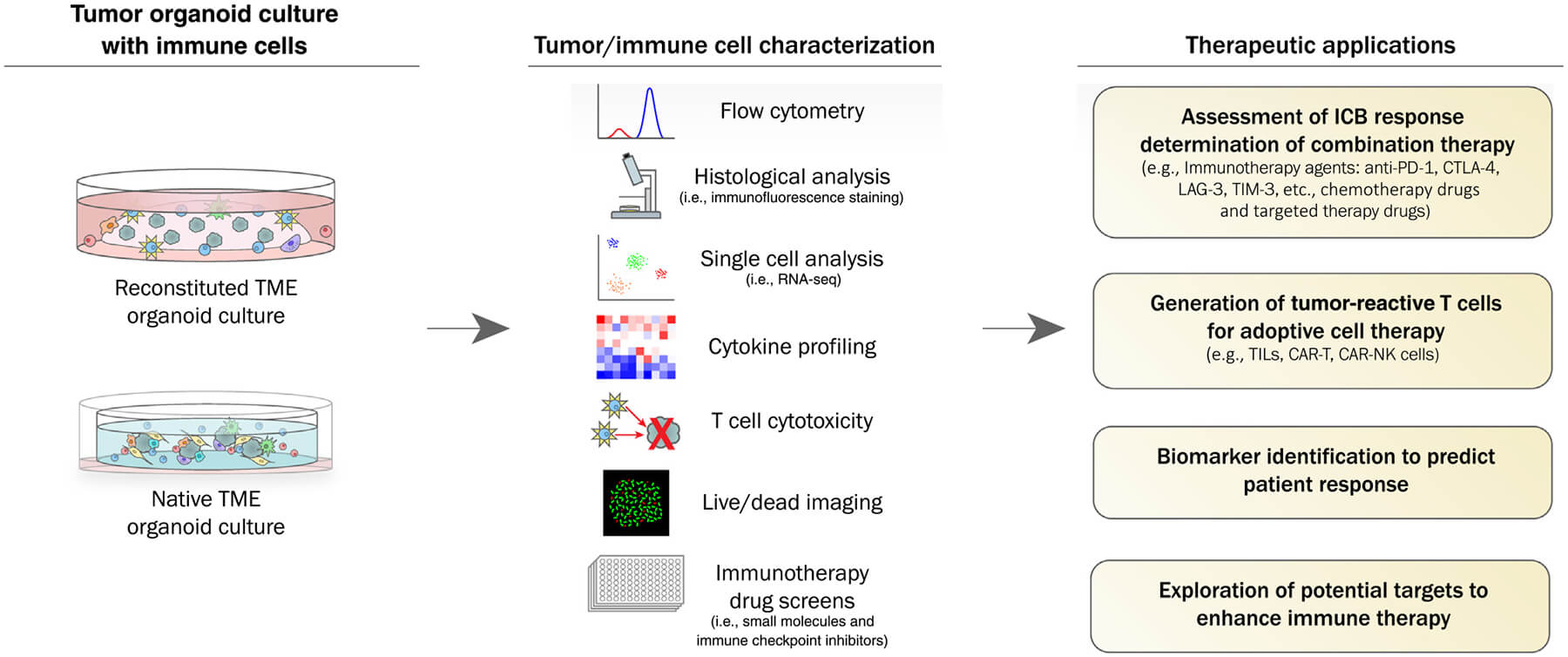In vitro human systems are useful tools for drug discovery, toxicology, and pharmacodynamics studies, which provide accurate results more related to human conditions. Creative Biolabs has accumulated extensive experience in the aspect of in vitro study. We offer a variety of solutions for in vitro human systems to facilitate your preclinical research.
In vitro cultured human cell and tissue models can replicate in vivo organ function and interactions among cell types and tissues, which play a significant role in a wide range of in vitro toxicology and pharmacodynamics studies. Compared to animal models, the in vitro human models are more flexible and easier to operate. The whole process of in vitro testing can be monitored and much crucial information can be acquired at multiple time points from a single experiment. Moreover, in vitro human models can eliminate the species-specific differences. The in vitro human models consist of human cells. Studies on in vitro human models yield results more relevant to human conditions rather than those data from animal models.
With the advances in the technology of human cell and tissue culture, in vitro model tools are more popular in a wide of preclinical researches. Creative Biolabs specializes in 2D human cell culture and 3D tissue construction as well as in vitro testing solutions. We offer a full range of in vitro human models to meet your preclinical research.
| 2D Cell Culture | 3D Tissue Models |
|
|
 Fig.1 Schematic diagrams of the traditional two-dimensional (2D) monolayer cell culture (A) and three typical three-dimensional (3D) cell culture systems: cell spheroids/aggregates grown on matrix (B), cells embedded within matrix (C), or scaffold-free cell spheroids in suspension (D). (Edmondson, 2014)
Fig.1 Schematic diagrams of the traditional two-dimensional (2D) monolayer cell culture (A) and three typical three-dimensional (3D) cell culture systems: cell spheroids/aggregates grown on matrix (B), cells embedded within matrix (C), or scaffold-free cell spheroids in suspension (D). (Edmondson, 2014)
Leveraging our various in vitro human system models, you can perform:
Creative Biolabs is proud of offering a wide range of solutions for in vitro human system construction and in vitro testing. If you are interested in our service, please don’t hesitate to contact us for more details.
Learn more about in vitro human system models:
 Fig. 2 Patient-Derived Organoids (PDOs) for Personalized Cancer Immunotherapy. (Kanako Yuki, 2020)
Fig. 2 Patient-Derived Organoids (PDOs) for Personalized Cancer Immunotherapy. (Kanako Yuki, 2020)
The article focuses on the advancements in tumor immunobiology through the development and application of in vitro human organoid culture systems. It highlights the transition from traditional 2D cultures to sophisticated 3D organoid models, which allow for more accurate simulations of the human tumor microenvironment. These organoids are capable of incorporating various immune components, thus providing a dynamic platform to study tumor-immune interactions and the efficacy of immunotherapies. The research underscores the application of these models in understanding the interactions within the tumor microenvironment, testing the effectiveness of immunotherapies, and exploring personalized medicine approaches. The utilization of in vitro human system models, such as organoids in this study, represents a significant methodological advancement, offering a more precise and controlled environment to study the complex biology of tumors and their interaction with the immune system, which is crucial for the development of targeted therapies.
In vitro human system models are laboratory-based methods that use human cells, tissues, or organs to study biological and pathological processes. These models help researchers understand drug mechanisms, toxicity, and pharmacodynamics without the need for early-stage human or animal testing, providing a more ethical and potentially faster approach to drug development.
Common in vitro human system models used in pharmacodynamics include primary cell cultures, human cell lines, stem cell-derived models, organoids, and microphysiological systems (such as organs-on-chips). Each model provides unique insights into how drugs affect human cells and tissues at molecular and cellular levels.
Organ-on-a-chip models mimic the functions of human organs on a microscale using cell cultures in a controlled microfluidic environment. These models allow for the study of complex organ interactions, drug metabolism, and organ-specific toxicity with high precision, offering insights that are difficult to obtain in traditional 2D cultures.
Human organoids, which are three-dimensional miniatures of organs derived from stem cells, play a crucial role in toxicology by providing a realistic model to study the effects of drugs on human tissues. Organoids can replicate key features of full-sized organs, including genetic, metabolic, and architectural characteristics, allowing for detailed toxicity screening.
In vitro human system models, especially those incorporating human liver cells or liver-on-a-chip technologies, can accurately predict how drugs will be metabolized in the human body. These models help identify potentially harmful metabolites early in the drug development process and can improve the understanding of a drug's pharmacokinetic properties.
While in vitro human system models provide valuable insights, they have limitations, such as the inability to fully replicate the complexity of whole-body interactions in humans. They may not accurately model the immune response or the influence of varying blood flow and other systemic factors that affect drug efficacy and safety.
In vitro models, particularly those derived from patient-specific cells like induced pluripotent stem cells (iPSCs), can be used to develop personalized medicine approaches. These models allow for testing how individual genetic backgrounds affect drug responses, leading to tailored therapies that maximize efficacy and minimize adverse effects.
Advances in tissue engineering, microfluidics, and stem cell technology are enhancing the effectiveness of in vitro human system models. Improvements in the 3D culturing techniques and the integration of multiple organ systems in a single platform (multi-organ chips) are providing more accurate and comprehensive data for drug testing and disease modeling.
Use the resources in our library to help you understand your options and make critical decisions for your study.
All listed services and products are For Research Use Only. Do Not use in any diagnostic or therapeutic applications.